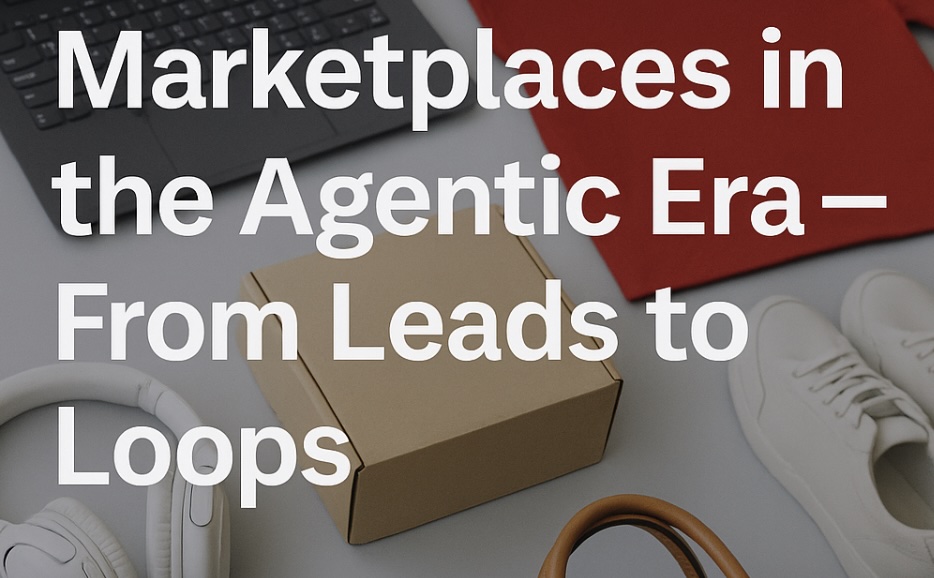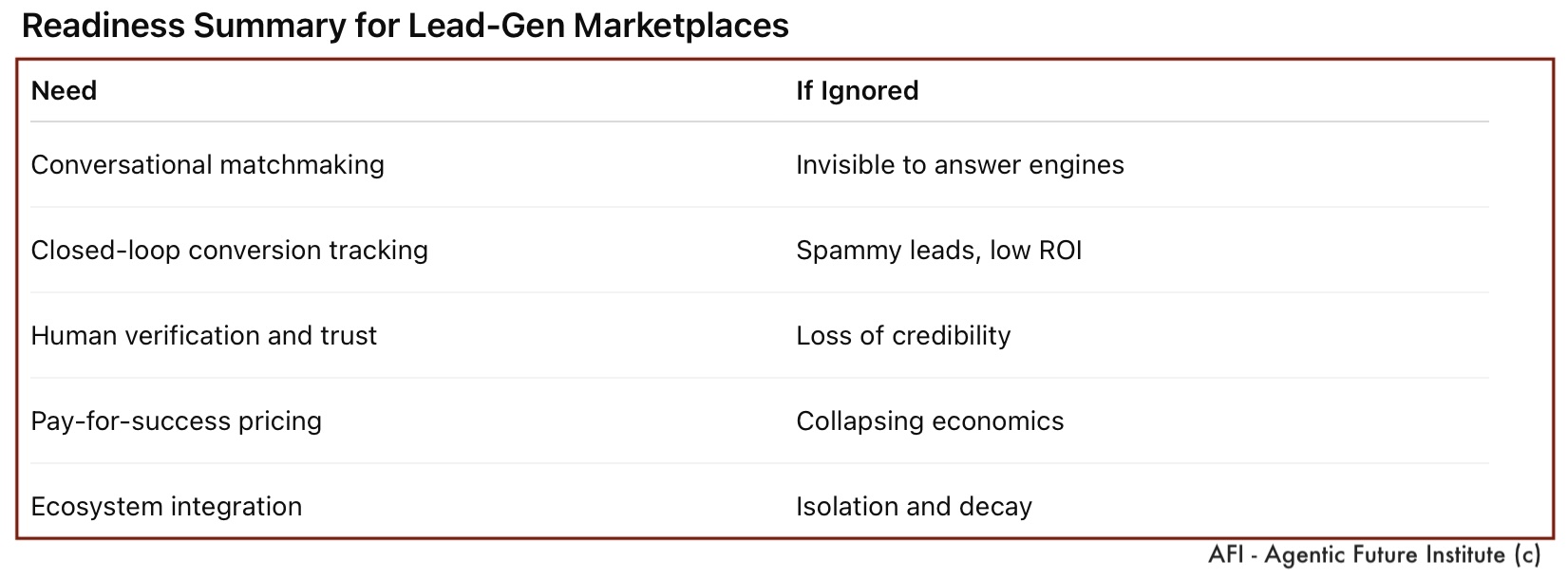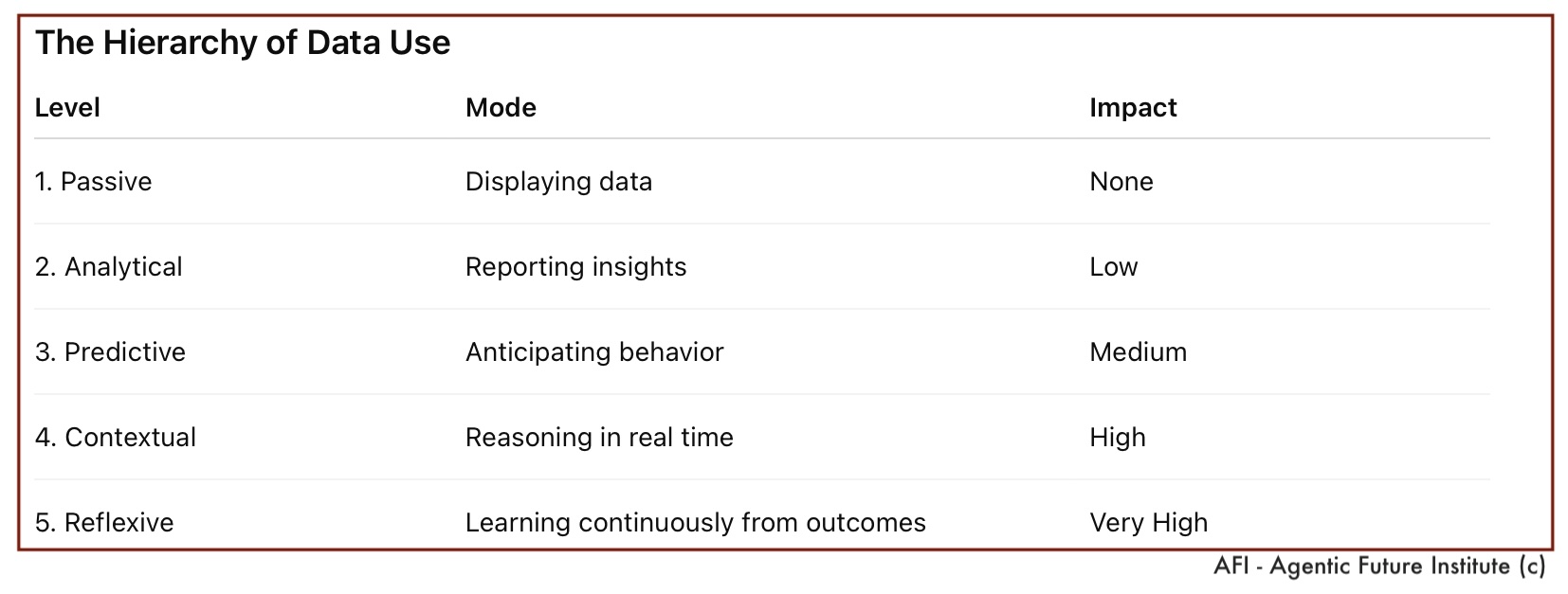
Marketplaces sit at one of the most important crossroads in the history of commerce. For nearly two decades, their strength came from aggregation — bringing buyers and sellers together at scale, optimizing discovery, and monetizing the friction between them. From Amazon and Etsy to Zillow, Angi, and Cars.com, marketplaces became the operating system of online commerce.
But that foundation is now shaking.
The arrival of AI agents — systems that can reason, converse, and transact — is rewriting how consumers discover and decide. Where marketplaces once owned the browsing experience, agents are now collapsing the funnel from search to decision.
In the pre-agentic era, success came from:
-
Maximizing traffic through SEO and advertising
-
Expanding listings and categories
-
Creating tools to compare, sort, and filter options
In the agentic era, success depends on:
-
Understanding user intent through conversation
-
Using data and reasoning to make accurate recommendations
-
Building systems that learn from every transaction and outcome
The shift isn’t theoretical — it’s already visible. OpenAI’s shopping integrations, Google’s “AI Overviews,” and specialized agents for travel, real estate, and automotive are absorbing the first layer of user intent that marketplaces used to own.
At the same time, the marketplace landscape is saturated:
-
High acquisition costs: Customer acquisition has become prohibitively expensive, especially for lead-gen platforms.
-
Thin differentiation: Competing marketplaces offer nearly identical UX and pricing models.
-
Trust deficit: Consumers are overwhelmed by choice but skeptical of quality, while sellers face constant pressure from low-margin, high-volume dynamics.
This moment creates both existential risk and unprecedented opportunity.
Those who remain static — optimizing SEO while agents take the front seat — will lose visibility and traffic. But those who evolve — embedding reasoning, human-AI trust, and reflexive data systems — will redefine what a marketplace is.
The rest of this report explores that transformation in depth: how marketplaces move from leads to loops, from aggregation to decisioning, and from traffic to trust as their core currency.
First some background:
This report began from a simple conversation on LinkedIn — a comment I made on Douglas Miller’s post “AI Will Eat Marketplaces,” which referenced Casey Winters’ article “When Agents Attack: How AI Collapses and Rebuilds Marketplace Moats.”
Both pieces argue that AI agents and “answer engines” will erode traditional marketplace moats by compressing the buying journey and removing friction. I agree with that direction — but not with the fatalism.
My comment was:
“If marketplaces play it right, they’ll survive. Not all will. The ones that adapt to the agentic model — where data, reasoning, and trust converge — will lead the next era of commerce.”
This is an analysis of that statement. It builds on the frameworks I’ve been developing at AFI (Agentic Future Institute - WIP) and connects them to real-world marketplace examples like Cars.com and lead-generation models.
My conclusion is simple: AI won’t eat all marketplaces — it will filter them.
The survivors will be those that evolve from aggregating supply to orchestrating intelligent decision-making.
1. The Starting Point — “AI Will Eat Marketplaces”
Casey Winters’ July 2025 article, “When Agents Attack,” made a clear case:
-
AI agents are becoming the entry point for consumer intent.
-
The traditional funnel (search → compare → buy) is collapsing into one step.
-
Old marketplace moats — network effects, SEO, and listings — are eroding as AI intermediates the entire journey.
His conclusion: marketplaces must become agentic themselves or fade away.
My take builds on that idea but reframes it:
AI doesn’t “eat” marketplaces; it forces their evolution.
Those who adapt fast enough to the agentic model — where every step is reasoned, contextual, and looped back into learning — will become stronger, not weaker.
2. The Agentic Readiness Framework for Marketplaces
At AFI, I use a three-part framework to measure how ready an organization is for the agentic future. Applying it to marketplaces reveals exactly what separates the survivors from the laggards.
A. Technology Readiness

B. Leadership & Mindset

C. Ecosystem & Business Model

When we apply this framework across different categories, the signal is consistent: marketplaces that evolve from data aggregators to decision systems survive. The rest will fade into invisible infrastructure behind AI interfaces.
3. The Shift: From Aggregation to Decisioning
Marketplaces used to win by aggregation.
- They gathered supply, exposed it through filters and SEO, and monetized visibility.
- That model dies in an agentic world because AI doesn’t browse. It decides.
- The new advantage is the ability to reason over data, not just display it.

The value chain has flipped. Aggregation is cheap; reasoning is scarce.
4. Lead-Generation Marketplaces: The First Casualties
Lead-generation marketplaces (Thumbtack, Angi, Houzz, Zillow, etc.) live off friction. They sell introductions — not outcomes.
AI’s very purpose is to eliminate that friction.
In the agentic world, the concept of a “lead” collapses. An AI agent doesn’t want five quotes; it wants one trusted provider and the ability to execute.
The New Rule: From Leads → Loops
Lead-gen marketplaces must transform into resolution loops — continuous, feedback-based systems that:
-
Capture intent
-
Match intelligently
-
Verify outcomes
-
Learn and improve
Without that loop, they’ll be bypassed entirely.
Readiness Summary for Lead-Gen Marketplaces

AI doesn’t just automate lead-gen — it deprecates it.
5. Case Study: Cars.com
Cars.com sits right in the middle of this transformation. It’s still primarily lead-gen (dealer subscriptions and listing fees), but it’s starting to move toward agentic readiness.
They’ve already made strong moves:
-
Acquiring Accu-Trade and CreditIQ to own pricing, valuation, and financing data.
-
Rebranding to “Cars Commerce” to reflect a shift toward infrastructure.
-
Deep VIN-level data, verified dealer networks, and real-time inventory.
Still, most user interactions end as leads, not completed loops.
Where Cars.com Stands

Cars.com’s advantage is that automotive transactions still involve high friction — financing, test drives, trade-ins — which keeps the human element relevant.
But AI will soon handle those workflows too.
If Cars.com doesn’t evolve from data aggregation to loop execution, it’ll become a back-end data provider for other people’s agents.
6. Data Alone Is Not a Moat
This is the single biggest misconception I see in marketplace strategy.
Owning data is not enough — what matters is how you use it.
AI agents don’t care who stores the data. They care who uses it to make better, faster, more trusted decisions.
The Hierarchy of Data Use

Only contextual and reflexive systems survive long term.
That’s where the agentic flywheel forms — when every action feeds new learning, improving future reasoning and outcomes.
Whoever closes the loop, wins.
Data without usage is noise. Reflexive data is power.
7. Timing: The Next 12 Months Matter Most
By 2026, major entry points like OpenAI, Google, and Apple will all be running conversational answer engines as default layers.
If a marketplace isn’t integrated into that layer — or hasn’t become its own — it risks losing discovery entirely.
The next 12-24 months are when marketplaces either become visible to agents or fade into background infrastructure.
8. Key Insights
-
AI isn’t destroying marketplaces; it’s destroying inefficiency.
Friction-based models like lead-gen are the first to fall.
Agentic systems that reason and verify thrive. -
Data isn’t the moat — loops are.
Closed feedback loops create intelligence. Static datasets create obsolescence. -
Leadership mindset determines survival.
CEOs still measuring traffic will miss the shift.
CEOs measuring reasoning accuracy, trust, and agent performance will own the next decade.
9. What Marketplaces Must Do in the Next Year
1. Build Agentic Interfaces
- Move from static search to conversation and reasoning.
- Let users express goals (“Find me a vintage chair under $500”) and deliver intelligent, verified outcomes.
- Blend AI agents and human experts for trust.
2. Close the Data Loop
- Every interaction should feed back into the system.
- Don’t just collect analytics — train models with them.
- Redefine success metrics around decision accuracy, conversion, and repeat engagement.
3. Reinvent the Business Model
- Move from lead volume to verified outcomes.
- Expose inventory and transaction APIs to connect with external agents.
- Invest in trust infrastructure — verified identity, performance history, and transparent review systems.
10. Closing Thoughts
AI isn’t eating marketplaces — it’s digesting their inefficiencies.
What emerges won’t look like eBay or Zillow. It’ll look like a network of reasoning systems — part AI, part human, continuously learning and transacting.
The next generation of marketplaces won’t just show what’s available — they’ll decide what’s right.
Those who start building that capability now will own the agentic decade ahead.